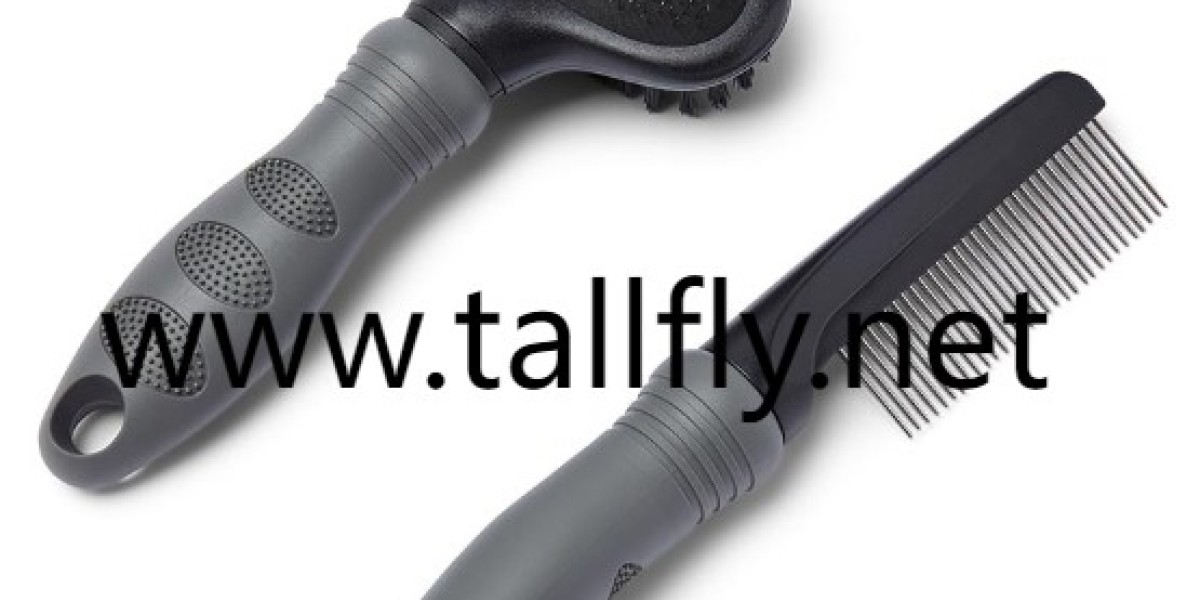In the realm of pet care innovations, understanding the inner workings of a " Pet Hair Remover Comb Manufacturer " design reveals the science that turns routine grooming into a high-efficiency task. As social media channels buzz with viral videos demonstrating quick fur removal hacks, discerning pet owners seek tools that deliver on both performance and comfort. The engineering behind hair remover combs balances mechanical principles with material science, ensuring that loose undercoat fibers lift away without tugging at healthy strands or irritating sensitive skin.
At the heart of each comb is a carefully calibrated tooth geometry. Rather than simple straight pins, these teeth feature slightly angled tips that catch stray hairs at just the right entry point. When combed through fur, the angle creates a gentle hook action: as the tooth slides beneath the surface layer, it engages loose and shedding hairs without digging into live hair follicles. This reduces discomfort for pets and minimizes breakage, a factor that resonates with current conversations around compassionate grooming practices.
Material choice plays a pivotal role as well. Many advanced combs employ stainless-steel alloys treated with anti-corrosion coatings, ensuring longevity even after repeated exposure to moisture and cleaning agents. The addition of a polymer buffer layer on each tooth helps to cushion the contact point against the animal's skin, distributing pressure evenly. This composite approach echoes trends in sports equipment and wearable tech, where hybrid materials optimize both strength and user comfort.
Ergonomic considerations extend beyond tooth design. Pet Hair Remover Comb Manufacturer teams often collaborate with industrial designers to sculpt handles that align with natural wrist positions. Raised contours and textured grips prevent slippage during longer brushing sessions, reducing strain on the groomer's hand. This aligns with broader hot topics in workplace ergonomics and home office setups, where tool comfort has become as important as functionality.
The mechanics of fur collection also involve integrated catchment features. As teeth lift loose fibers, a rear-facing comb wall channels the hair toward a detachable tray. This innovation prevents scattered fur from carpeting your floors and simplifies waste disposal. In an era where cleanliness and hygiene have gained renewed emphasis through public health discussions, such design elements cater to owners committed to maintaining pet-friendly yet spotless living spaces.
Behind these user-facing features lie rigorous testing protocols. Manufacturers simulate thousands of brushing cycles on synthetic fur patches that replicate various coat textures—from fine-haired cats to double-coated breeds. Sensors measure the force exerted on synthetic skin analogs, ensuring that tooth penetration remains within safe thresholds. These data-driven trials inform incremental refinements, mirroring how automotive and aerospace industries iterate components for peak performance.
Sustainability has risen to the forefront of consumer choice, and leading comb producers respond by integrating eco-friendly practices. Handles crafted from recycled plastics or renewable bamboo fibers reduce reliance on virgin materials. Metal parts undergo closed-loop recycling processes that recapture excess shavings and off-cuts. In influencer communities that celebrate zero-waste living and upcycling tutorials, showcasing a grooming tool with a lean production footprint generates positive engagement and drives responsible buying decisions.
Innovative manufacturers also embrace modularity. Some combs feature interchangeable tooth modules that snap into the handle body. Users can swap in finer-toothed inserts for cats or coarser modules for large dogs. This flexibility aligns with the DIY culture of customization, where pet owners tailor their tools to evolving needs without discarding entire devices. It's an approach borrowed from power tool ecosystems, where accessory kits extend product lifespans and reduce resource consumption.
The rise of connected home gadgets has even influenced hair remover comb design. Prototype models incorporate small magnets or RFIDs that track usage frequency and brushing duration. Paired with a companion app, these combs can remind owners when their pet's coat requires attention, or log grooming sessions for health check records. While still emerging, this intersection of analog grooming tools and digital monitoring reflects a wider shift toward smart home integration.
From community grooming salons to solo pet parents, users now expect a grooming tool that delivers reliable de-shedding without trade-offs in comfort or sustainability. By marrying mechanical precision, thoughtful materials, and user-centric ergonomics, advanced hair remover combs meet the demands of today's conscientious owners. As each prototype moves from concept sketches to certified production lines, manufacturers refine every millimeter of tooth profile and handle contour to uphold safety and performance standards.
For those eager to explore these cutting-edge grooming solutions, detailed product information, cleaning instructions, and user testimonials are available at www.tallfly.net . This resource showcases a variety of comb configurations, ergonomic handle styles, and material options designed to accommodate every coat type and grooming routine, inviting pet lovers to discover the science behind superior hair removal.



